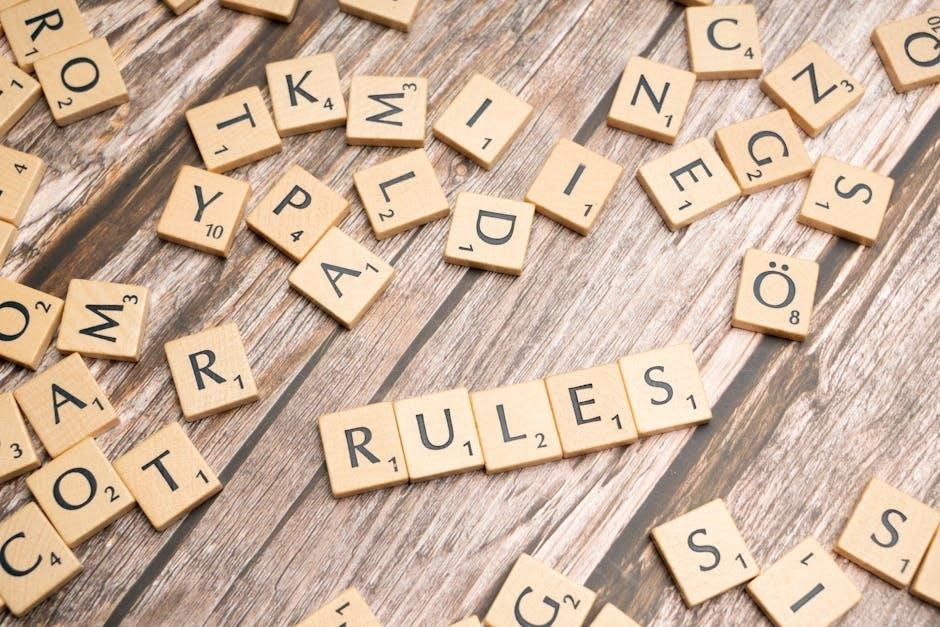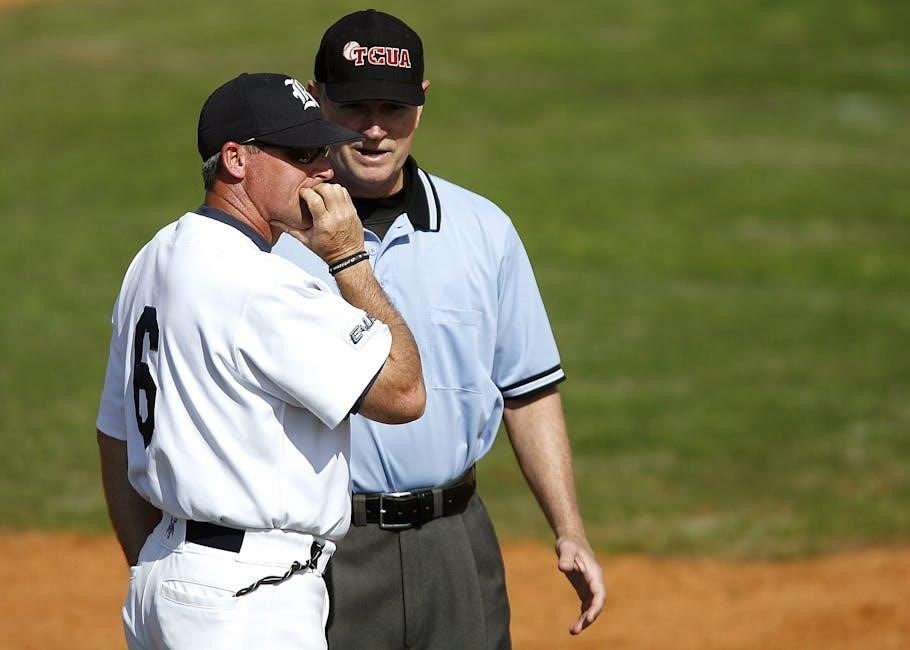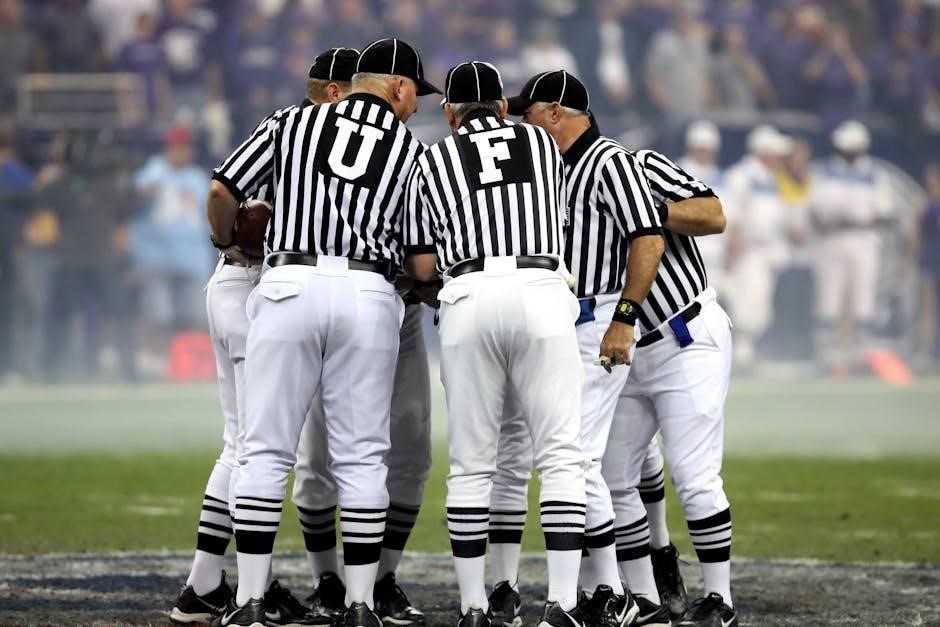Kubb, also known as Viking chess, is a Swedish lawn game with rich history and social appeal. It combines strategy and skill, played with wooden pieces and batons. The objective is to knock down all opposing kubbs and the king, following specific rules for a fun and challenging experience for all ages.
Overview of the Game
Kubb is a Swedish lawn game involving wooden pieces and batons, blending strategy and skill. Played on a rectangular field, teams take turns throwing batons to knock down opposing kubbs and the king. With origins tracing back to Viking times, it emphasizes precision and teamwork. The game is simple yet challenging, appealing to players of all ages. Its unique rules and social nature make it a popular outdoor activity worldwide.
Historical Background
Kubb, often called Viking chess, has roots in Sweden, possibly dating back to the Viking era. Its name derives from the Swedish word “kubba,” meaning “to throw.” Historically, it was a game of skill and strategy, played with wooden pieces. Over centuries, it evolved into a popular lawn game, maintaining its traditional charm while adapting to modern rules. Today, it remains a beloved outdoor activity, celebrating its rich heritage.
Popularity and Modern Play
Kubb has gained global popularity as a social and strategic outdoor game. Originating in Sweden, it is now enjoyed worldwide, with organized tournaments and casual play. Its simplicity and depth appeal to all ages, making it a favorite at events and gatherings. Modern rules ensure fair play, fostering a sense of community and competition. The game’s portability and ease of setup contribute to its widespread enjoyment in parks, backyards, and recreational spaces.

Setup and Equipment
Kubb includes 10 wooden kubbs, 1 king, 6 throwing batons, and 4 corner stakes. The equipment is simple, portable, and designed for outdoor play on any flat surface.
Components of the Game
The game consists of 10 wooden kubbs, 1 king kubb, 6 throwing batons, and 4 corner stakes. The kubbs are small wooden blocks, while the king is slightly larger. The batons are used for throwing and knocking over the kubbs. Corner stakes mark the playing field boundaries, ensuring a structured setup. All components are lightweight and portable, making the game easy to set up on any flat outdoor surface for enjoyable play.
Field Dimensions and Layout
The playing field is typically 16 feet by 26 feet, divided into two equal halves. The king is placed in the center, flanked by five kubbs on each side, arranged symmetrically. Corner stakes mark the field boundaries, and teams throw from behind their baseline. The kubbs are spaced evenly, creating a balanced and fair setup for gameplay. This layout ensures a structured and competitive environment, with clear boundaries for throwing and knocking down kubbs.
Preparation Before Play
Before starting, measure and mark the playing field, ensuring it is 16×26 feet. Place corner stakes at each corner and position the king in the center. Arrange ten kubbs symmetrically on each side of the king, maintaining equal spacing. Teams should gather throwing batons and ensure all pieces are upright. The field is divided into two halves, with each team responsible for their side. Proper preparation ensures fair and organized gameplay for all participants. This setup is crucial for a smooth experience.

Objective of the Game
The objective is to knock over all opposing kubbs and then the king using throwing batons, with the king requiring all kubbs to be down first.
Primary Goal
The primary goal in Kubb is for a team to knock over all the opponent’s field kubbs before attempting to topple the king. Each team takes turns throwing batons to eliminate the opposing kubbs, strategically aiming for maximum impact. The king must be the last piece knocked down, and failure to adhere to this sequence results in an automatic loss. Teams must methodically clear the field kubbs to unlock the chance to strike the king and claim victory.
Winning Conditions
To win, a team must knock over all the opposing field kubbs before toppling the king. If the king is knocked down prematurely, the team loses immediately. The game concludes once the king is legally felled after all field kubbs are down. Proper sequence and strategy are essential, as failure to adhere to these rules results in an automatic loss, emphasizing precision and tactical play in achieving victory.

Gameplay Basics
Kubb begins with a handshake, and teams take turns throwing batons to knock down opposing kubbs. Players must throw from behind their baseline, aiming to topple kubbs strategically.
Starting the Game
The game begins with a traditional handshake between teams. The playing field is set up with 10 kubbs and one king, positioned evenly between corner stakes. Teams take turns throwing batons from behind their baseline. The objective is to knock down all opposing kubbs before targeting the king. Players must follow rules for throwing and placement to ensure fair play and strategic engagement.
Turn-Based Mechanics
Teams alternate turns, with each player throwing batons to knock down kubbs. A turn ends when a player misses or all kubbs are down. The opposing team then throws. If a kubb lands out of bounds, it must be rethrown. Teams must knock down all field kubbs before targeting the king. Each turn starts from the position of the last thrown baton, ensuring continuous strategic play and maintaining game flow.

Rules for Knocking Down Kubbs
Teams take turns knocking down kubbs with batons. All field kubbs must be eliminated before targeting the king. Missing throws incur penalties, impacting gameplay strategy.
Field Kubb Rules
The game features 10 field kubbs and 1 king kubb. Players must knock down all opposing field kubbs before targeting the king. Each team takes turns throwing batons to topple kubbs. If both throws fail, the opposing team may reposition the kubbs. Field kubbs can be stacked to create challenges. The imaginary baseline at the rear of the pitch serves as the throwing line. Teams must knock down all opposing field kubbs before attempting to topple the king.
King Kubb Rules
The king is the central piece and must be the last to fall. Teams must knock down all opposing field kubbs before attempting to topple the king. If the king is knocked over prematurely, the opposing team wins immediately. The king stands taller than field kubbs, making it a challenging final target; Its central placement requires precise throws to ensure victory, adding suspense to the game’s conclusion.

Throwing Techniques
Proper throwing involves gripping the baton firmly, standing behind the baseline, and using an underhand swing. Accuracy and strength are key to knocking down kubbs effectively.
Proper Throwing Methods
Proper throwing in Kubb involves a firm grip on the baton, standing behind the baseline, and using an underhand swing. Players must ensure the baton lands within bounds and aim accurately. Balance and control are essential for effective throws. The goal is to knock down kubbs without exceeding the allowed throws per turn, maintaining strategy and precision throughout the game.
Strategies for Effective Throws
Effective throws in Kubb require strategic planning and teamwork. Focus on targeting the closest kubbs first to clear the field gradually. Using angles and varying baton speed can improve accuracy. Communication with teammates ensures coordinated efforts, maximizing each turn’s impact. Placing knocked kubbs strategically can hinder opponents, enhancing your team’s advantage and increasing chances of victory.

Scoring and Winning
Scoring in Kubb is based on knocking down all opposing kubbs and the king. The first team to achieve this wins, with no points for partial progress.
Scoring System
Scoring in Kubb is straightforward, with points earned by knocking down opposing kubbs. Each fallen kubb counts as a point, and the king is the final, decisive point. Penalties, such as improper throws, may award advantages to the opposing team. If a team fails to knock down all kubbs, the opponent gains strategic placement benefits. The game concludes when all kubbs and the king are toppled, declaring the winning team.
Final Victory Conditions
The game concludes when one team successfully knocks down all opposing kubbs and then the king. Knocking down the king prematurely results in immediate loss. Teams must strategically balance accuracy and timing to achieve victory, ensuring all kubbs are down before targeting the king. Penalties for improper throws can grant the opposing team advantages, adding complexity to the path to victory.

Penalties and Mistakes
Penalties occur for rule violations, such as illegal throws or improper kubb placement. Mistakes like failing to knock down kubbs grant the opposing team strategic advantages, affecting gameplay.
Common Penalties
Common penalties include illegal throws, such as stepping over the baseline or not using the correct throwing baton. Another penalty is improper placement of kubbs, which can be moved by the opposing team. Repeated violations may result in disqualification. Teams must adhere to these rules to ensure fair play and maintain the integrity of the game.
Consequences of Errors
Consequences of errors in Kubb include losing turns or giving the opposing team advantages. Illegal throws or improper Kubb placement allow opponents to reposition Kubbs or gain favorable conditions. Repeated violations can lead to penalties, potentially altering the game’s balance and fairness. Ensuring accurate throws and proper setup is crucial to avoid these setbacks and maintain competitive integrity throughout the match.

Advanced Strategies
Advanced strategies involve precise team coordination, strategic Kubb placement, and adaptive throwing techniques to outmaneuver opponents while maintaining focus on the ultimate goal of knocking down the King.
Team Coordination
Effective team coordination is crucial in Kubb, involving clear communication, role assignment, and strategic planning. Teams must work together to maximize their chances of knocking down all kubbs and the King. Players should focus on their strengths, such as accurate throwing or tactical placement, while maintaining constant communication to adapt strategies mid-game. Coordination ensures a balanced approach, enhancing overall performance and teamwork, which are essential for achieving victory in this competitive yet collaborative game.
Tactical Placement of Kubbs
Tactical placement of kubbs is crucial for strategic advantage. Teams position kubbs between corner stakes, with the King at the center. Knocked-down kubbs can be stacked, creating challenging targets. If a team fails to hit a kubb, opponents may reposition it, enhancing gameplay dynamics. Proper placement ensures fair play and maintains field boundaries, providing a balanced and competitive experience for all players involved.
Kubb is a timeless game blending strategy and fun. The goal is to knock down all kubbs and the King. Perfect for gatherings, it offers both excitement and challenge for everyone.
Kubb is a Swedish lawn game involving wooden pieces and batons. The objective is to knock down all opposing kubbs and the King. Played on a 16×26-foot field, it requires strategy and skill. Teams take turns throwing batons, with penalties for errors. The game ends when all kubbs and the King are knocked down. It’s a social, accessible game suitable for all ages and skill levels, perfect for gatherings and outdoor events.
Encouragement to Play
Kubb is an engaging and rewarding game perfect for outdoor gatherings. Its simple rules and social nature make it accessible to all ages and skill levels. Whether with family, friends, or coworkers, Kubb fosters teamwork and healthy competition. Give it a try to enjoy fresh air, strategic fun, and memorable moments. It’s an excellent way to connect with others while experiencing the thrill of knocking down kubbs and the King!
